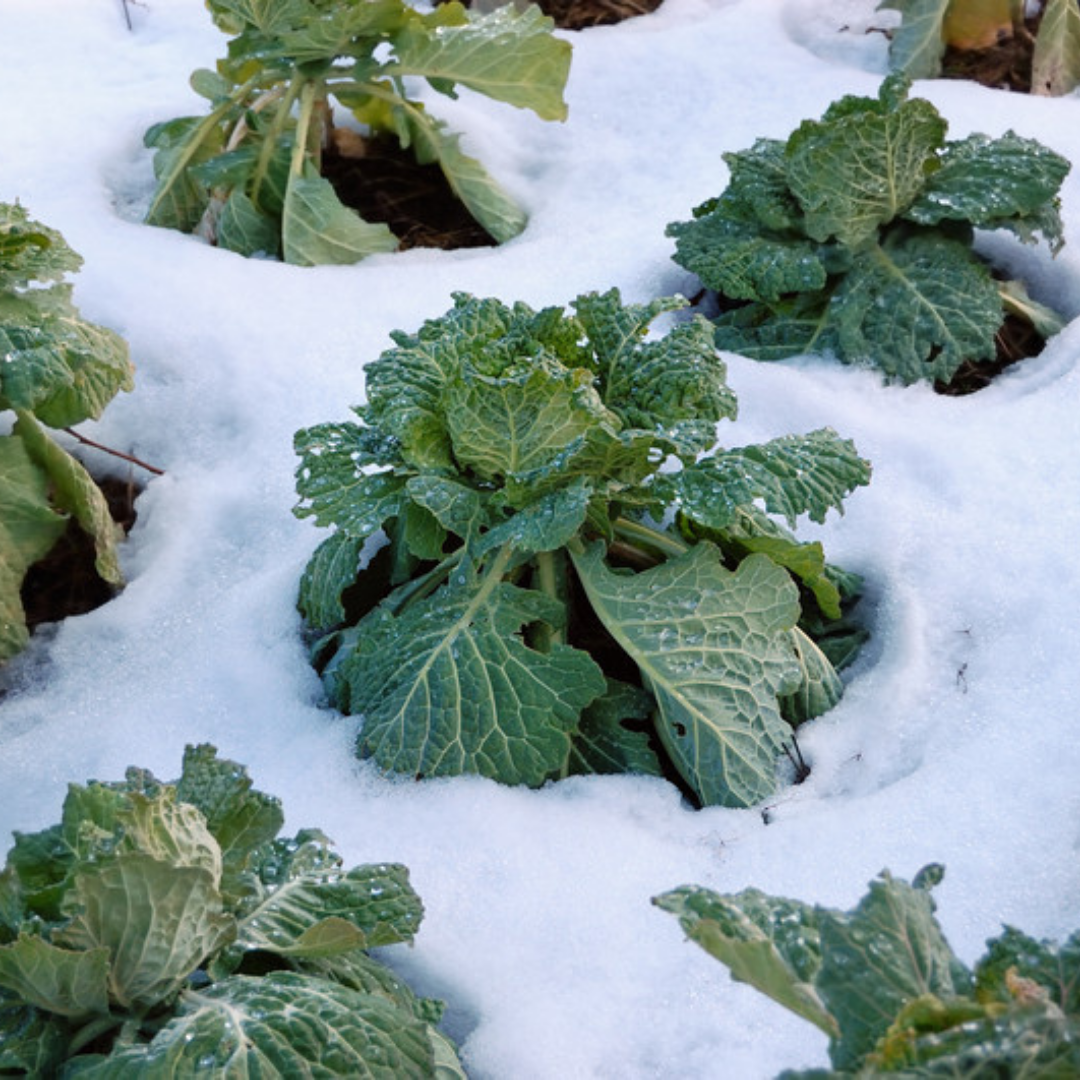
Overwintering
What is overwintering?
Overwintering means you have timed the planting of crops in summer so that they reach maturity before day length and soil temps fall into the “no grow zone”. The no grow zone is when day length drops below 10 hours per day and soil temps drop below 40*F (generally by November for Northeast Ohio).
The days to maturity on the back of your seed packets are a good marker for counting-back from the “no grow zone” to know when to start planting. It is also important to note that days to maturity are calculated based on spring-time planting, when day length is increasing.
Consequently you will need to add about 14-21 days to any calculation to account for shrinking day length in the fall. Helpful tips and calculations for overwintering can be found in Four-Season Harvest | Four Season Farm by advanced and seasoned Northeast grower, Elliot Coleman.
Why do plants need to reach maturity before the no grow zone?
When cold-hardy plants reach maturity, they have developed the ability to create anti-freeze type chemical compounds within their cell walls. This allows them to withstand frequent freezing temps and thaws before significant loss or leaf damage occurs.
Additionally mature plants, even the not cold hardy ones, are better able to withstand weather fluctuations because they have more fully developed root systems to pull from.
Lastly, once plants hit the no-grow zone they essentially stop growing, so it is important for plants to reach a mature or harvestable stage before that point.
Which crops are cold hardy?
Some examples of cold hardy crops for zone 5 include parsley, cilantro, kale, brussels sprouts, broccoli, leeks, carrots, radish, turnip, beets, and some baby greens (with extra care) such as arugula, swiss chard, and brassicas (mibuna, mizuna, pac choi).
Some varieties are more cold hardy than others, and some are specifically bred to be the most cold hardy. Look for that when selecting varieties. Some examples include Winterbor kale, Bandit leeks, Marathon broccoli and Diablo brussels sprouts. Check out Seeds for Growing Cold Weather Crops | Johnny's Selected Seeds (johnnyseeds.com) for some specifically bred varieties.

How can I protect my crops while they overwinter?
Many home gardeners and farmers will utilize products such as row cover to protect their crops from intermittent frosts and freezes. Row cover for fall use must be a heavier weight, and can also reduce light transmission, so it is important to remove it each day and recover each night.
For cold periods that are persistent, you may want to consider installing a low tunnel, caterpillar tunnel or high tunnel for increased crop protection. These range in price, movability, and construction experience depending on how intensely you want to pursue overwintered crops.
Low tunnels are an easy enough DIY project with details explained by West Virginia Extension service in this link. Keep in mind you can add a layer of UV stabilized poly for increased snow and cold protection, but they may need to be removed when the sun comes out to avoid “cooking” your plants.

When can I harvest overwintered crops?
Overwintered crops can be harvested any time you want to eat them and they are not frozen. If they are frozen, you will need to wait for a sunny day or later in the day for them to thaw, otherwise they will become mushy.
Some crops taste better as the cold settles in, root crops get sweeter as sugars transfer down, and kale also tempers its bitterness with a nip from Jack Frost.
Overwintering takes practice, luck, and consistent weather, but a fresh salad in December is worth the effort!
